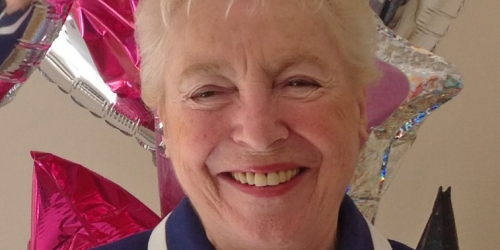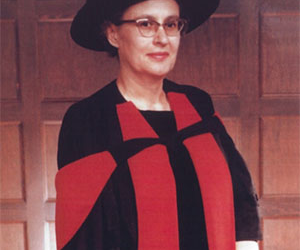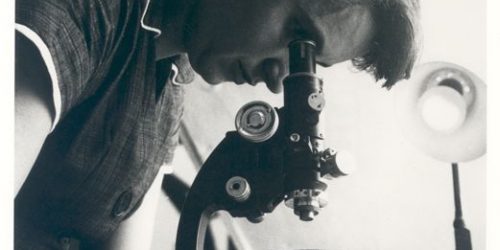Dame Mary Cartwright, DBE, FRS (en)
This is a blog post by Frank Bott, for International Women’s Day 2021. You can find the Welsh version here.
Dyma blog gan Frank Bott, ar gyfer Diwrnod Rhyngwladol Y Menywod 2021. Cewch ffindio’r fersiwn Cymraeg yma.

Mathematician and Mistress of Girton College, Cambridge, Dame Mary Cartwright (1900 – 1998) was one of the most eminent British pure mathematicians of the mid-20th century. Along with Littlewood, Birkhoff and Kolmogorov, she was one of the founders of chaos theory.
Cartwright read Mathematics at St Hugh’s College, Oxford, gaining a first. After four years of school teaching, she returned to Oxford as a research student under the supervision of G H Hardy. She was awarded her DPhil in 1930, her external examiner being J E Littlewood from Cambridge. (Hardy and Littlewood were the two leading British pure mathematicians of the first half of the twentieth century.) She moved to Girton College, Cambridge to take up a research fellowship. In 1935, she published a substantial paper in Mathematische Annalen, entitled ‘Some inequalities in the theory of functions’, which established her reputation and led to her appointment as a Lecturer in Cambridge, where she was to remain until her retirement.
Although her first love was the theory of functions, a field in which she was to continue to publish important work through into her retirement, Cartwright’s best-known work concerns the Van der Pol equation. In 1938, the government asked for guidance from pure mathematicians about certain types of second-order, non-linear ordinary differential equations that have important applications in radar and radio engineering more generally. Cartwright and Littlewood became interested in the Van der Pol equation, which, at its simplest, takes the form

They succeeded in showing that, when μ is large, all non-trivial solutions of this equation converge to a periodic solution whose amplitude tends to 2 as μ →∞ . From this, they went on to a detailed analysis of the behaviour of the solutions of the same equation with a forcing term. The result was three joint papers, not published until after the end of the Second World War because of their relevance to radar and radio communications. This work clearly demonstrated chaotic behaviour and what is now known as the butterfly effect. Cartwright went on to develop these ideas in some 30 further papers, mostly with herself as sole author.
In 1947, Cartwright was elected a Fellow of the Royal Society, only the fourth woman to be elected and the first female mathematician. In 1955, she became the first woman to serve on the Council of the Society and was awarded the Sylvester Medal of the Society in 1964. She served terms as President of the Mathematical Association and the London Mathematical Society, whose highest honour, the de Morgan Medal, she was awarded in 1968. She was made a Dame Commander of the Order of the British Empire in 1969. The London Mathematical Society continues to host an annual Mary Cartwright Lecture in her honour.
In 1949, Cartwright became Mistress of Girton, a position that she held until her retirement in 1968. This was a critical period for the College. She took up the office of Mistress just as Cambridge had (finally!) decided that women could be awarded degrees but this meant significant changes were required in the way that the College was operated. She ran Girton in an unassuming but efficient and effective manner. As ‘Head of a House’ she was expected to be involved in University affairs at a high level, an involvement that she welcomed, serving on the Council of the Senate for many years as well as chairing the Mathematics Faculty.
To me as an undergraduate attending her lectures on differential equations, Mary seemed a remote and awe-inspiring figure but, after I graduated, I came to know her better. She was passionately concerned with the needs of women students in Cambridge. She was fond of the theatre, of opera and of the arts in general, and she had travelled widely. Moreover, she was thoroughly good company.
Frank Bott





